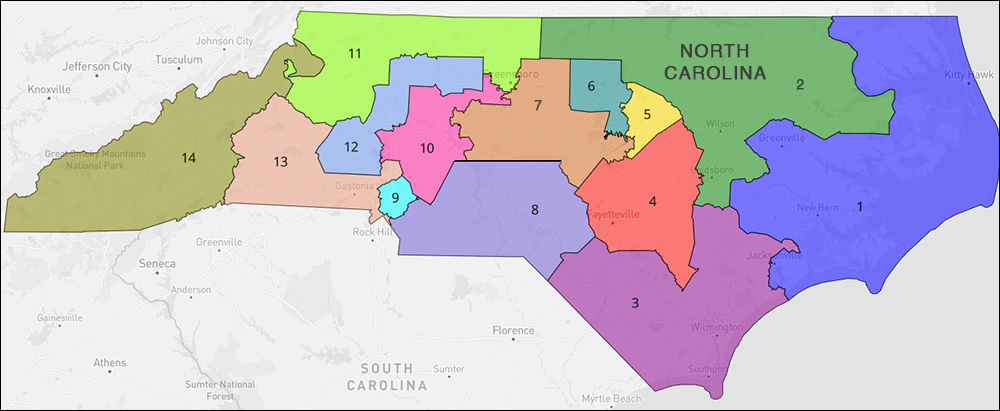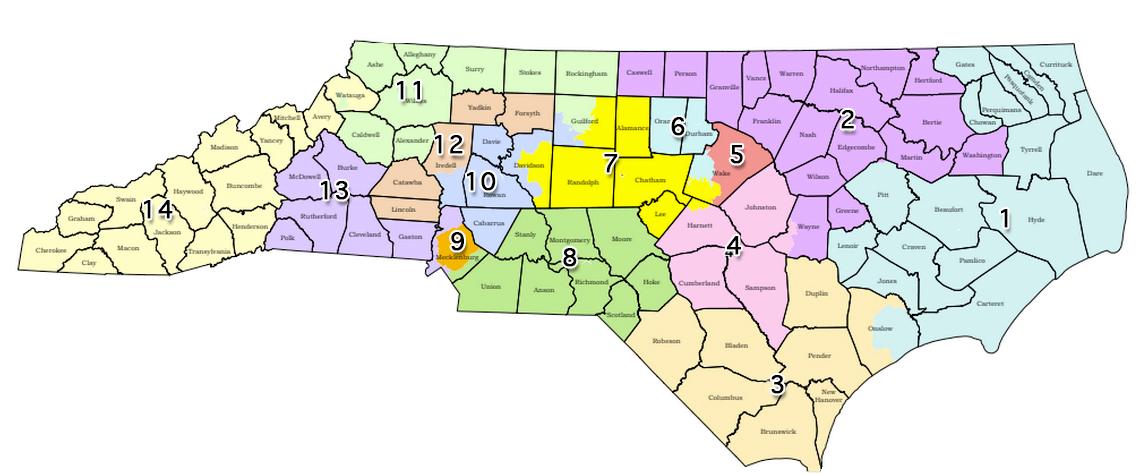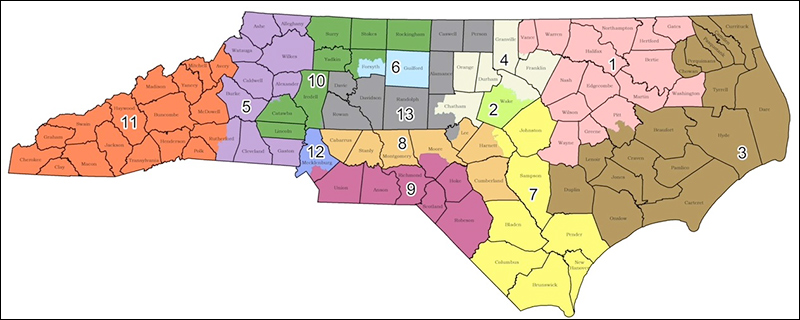By Jim Ellis
May 16, 2022
Senate
North Carolina: Dueling General Election Polls — With US Rep. Ted Budd (R-Advance) now substantially ahead in 12 consecutive Republican primary polls from the end of March to present, it appears clear he is going to be nominated on Tuesday. Therefore, attention is already being paid to the formulating general election. Two polls featuring Rep. Budd and consensus Democratic nominee Cheri Beasley, the former state Supreme Court Chief Justice, have just been released.The first, from the Beasley campaign that the Global Strategy Group conducted (April 28-May 4; 800 likely North Carolina general election voters) finds the poll sponsor and Rep. Budd tied at 45 percent. Emerson College also released their survey (May 7-9; 1,000 registered North Carolina voters) that gives Budd a 48-41 percent advantage. We can expect this to be one of the top Senate races in the country come November and will feature a plethora of public polls.
House
NC-1: Dems Have Clear Poll Leader; Republicans Attacking Their Own — The GQR survey research firm ran a poll of the open 1st District Democratic primary (May 6-8; 407 likely NC-1 Democratic primary voters) and find state Sen. Don Davis (D-Snow Hill) leading former state senator and 2020 US Senate candidate Erica Smith, 44-31 percent, as the candidates make their final pitch before Tuesday’s primary election.
The Republican-oriented Congressional Leadership Fund, loosely associated with House Minority Leader Kevin McCarthy (R-CA), is actively running ads against GOP candidate Sandy Smith, the 2020 CD-1 nominee who held incumbent Rep. G.K. Butterfield (D-Wilson) to a 54-46 percent re-election victory.
The CLF does not indicate support for another candidate, but former Rocky Mount Mayor Sandy Roberson appears to be Smith’s strongest competitor. The move is curious in that the ads lay out personal negatives against Smith that could be used against her in the general election should she win the GOP nomination. The new 1st, which the state Supreme Court drafted, is rated D+5, thus suggesting a competitive general election.
Governor
New Mexico: Close Race Brewing — Survey USA polling for KOB-TV in Albuquerque (April 29-May 7; 1,389 likely New Mexico general election voters; interactive voice response system and online) tested the upcoming governor’s race and finds 2020 US Senate Republican nominee and former television weatherman Mark Ronchetti pulling to within the margin of polling error against Gov. Michelle Lujan Grisham (D).
The ballot test breaks 47-43 percent in favor of the incumbent. More troubling for Gov. Lujan Grisham, however, is her results against the entire Republican field. Paired individually with each of five candidates, Gov. Lujan Grisham, though leading in every case, fails to reach 50 percent against any of her GOP opponents. The cumulative results portend a highly competitive November race.
Pennsylvania: Senate President Drops Out — Just days before Tuesday’s Pennsylvania primary, state Senate President Jake Corman has dropped his Republican gubernatorial bid and endorsed fellow contender Lou Barletta, the former congressman and 2020 US Senate nominee. With Corman never able to increase his support from low single digits, his withdrawal is designed to help Barletta overcome the polling lead that state Sen. Doug Mastriano (D-Fayetteville) has established.
Pennsylvania Republican leaders are reportedly nervous that Sen. Mastriano, who was a legislative leader in attempting to determine if there was widespread fraud in the state during the 2020 election, would be unable to defeat Attorney General Josh Shapiro, who is the consensus Democratic gubernatorial nominee. It is likely that the Corman-Barletta move will prove too little, too late, however.
States
Texas Attorney General: Paxton Leading Big — A CWS Research poll (May 4-10; 992 likely Texas Republican primary runoff voters; interactive voice response system and text) reports that Attorney General Ken Paxton is substantially ahead of Land Commissioner George P. Bush, the son of former Florida governor and 2016 presidential candidate Jeb Bush. The CWS results find AG Paxton holding a whopping 58-31 percent lead as the candidates move toward the state’s May 24 runoff election date. In the primary, Paxton garnered 42.7 percent of the vote, which is obviously short of the majority vote a candidate needs to win the nomination outright. In a field of four candidates, Bush finished second with 22.8 percent.






